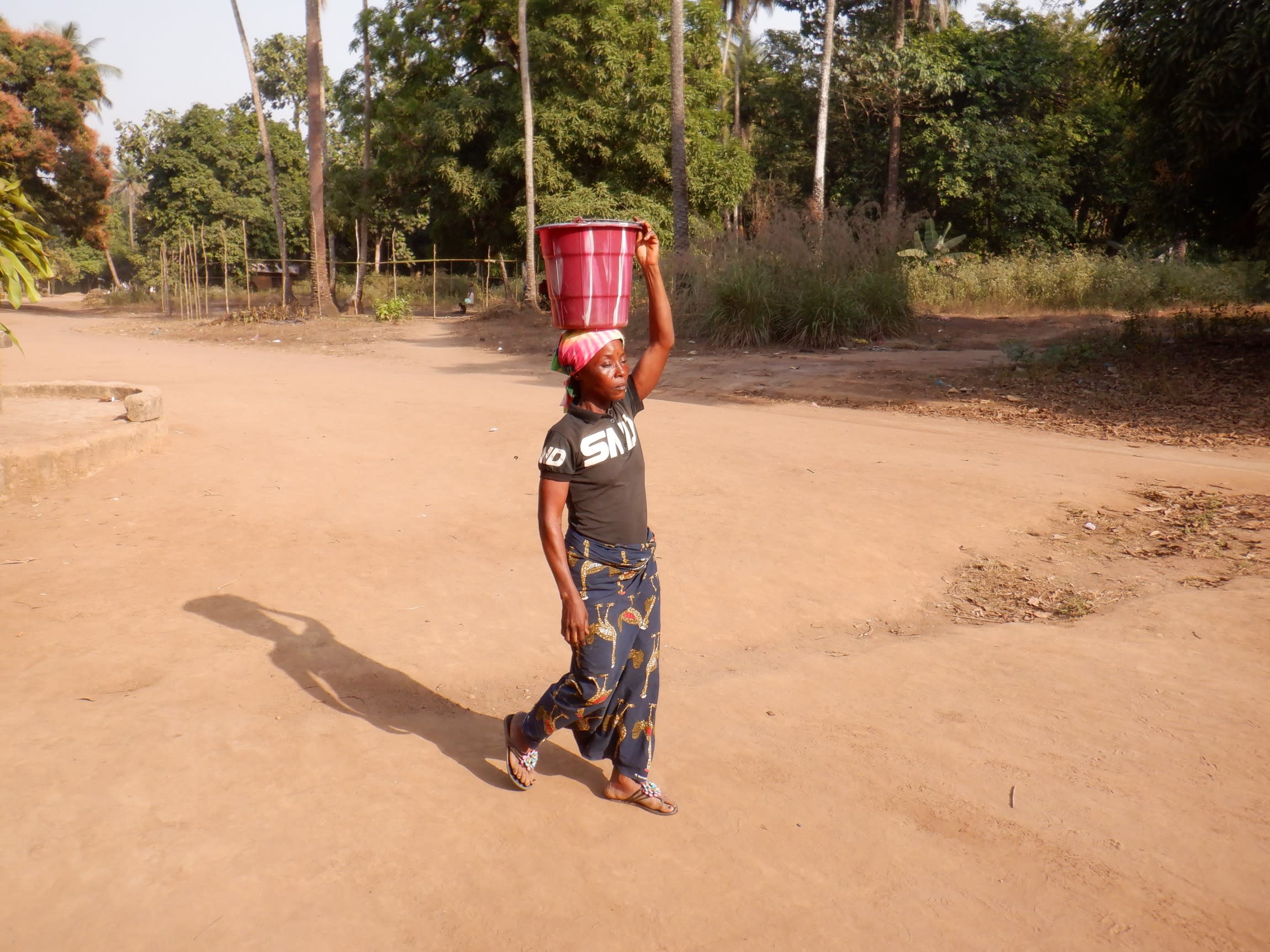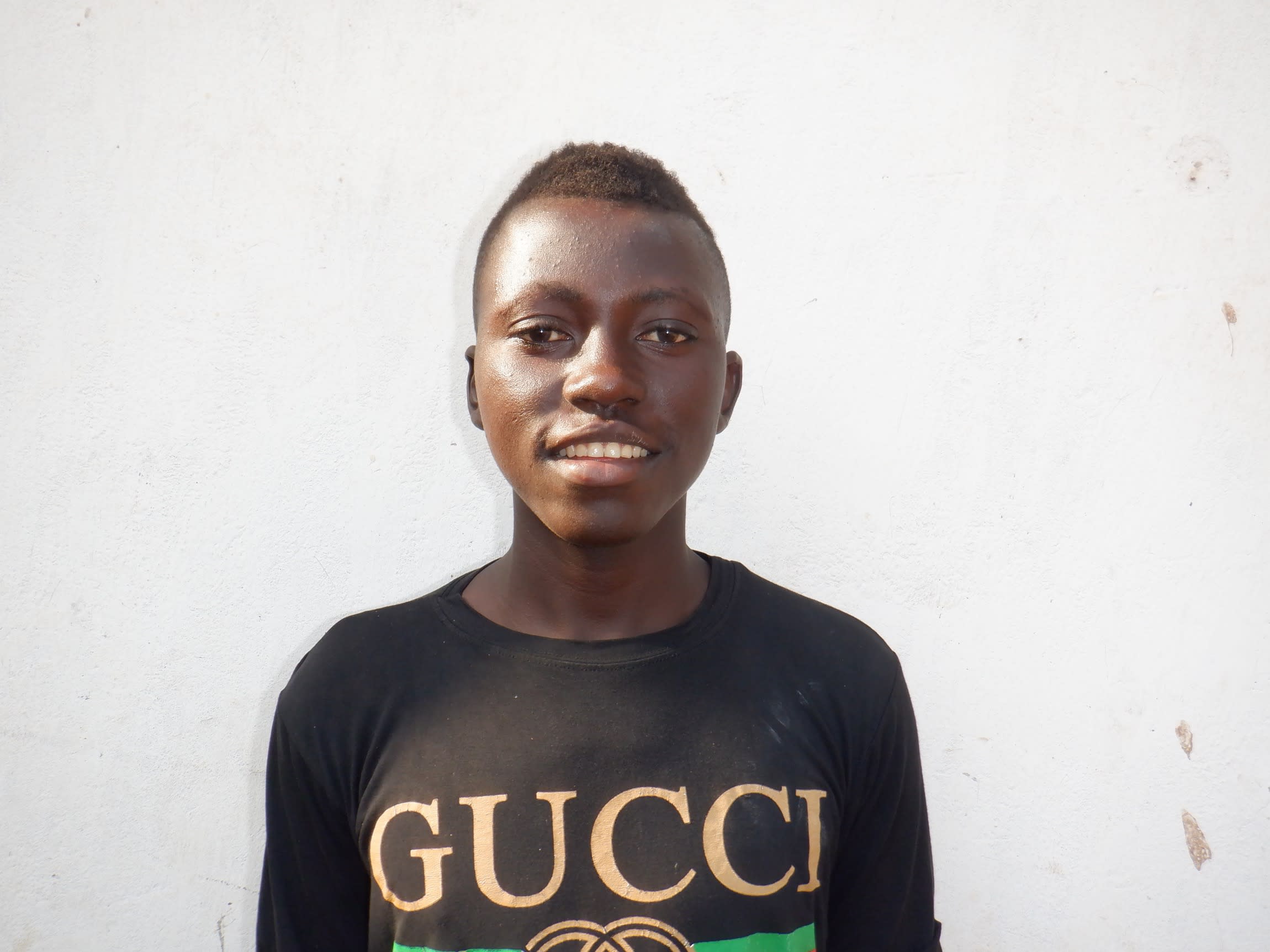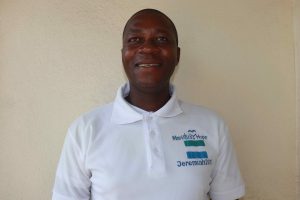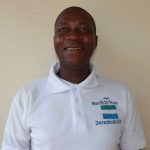June, 2022: Lower Kamayea Community New Borehole Complete!
We are excited to share that there is now a safe, reliable borehole well at Lower Kamayea Community. As a result, the students and community members no longer rely on unsafe water to meet their daily needs. We also conducted hygiene and sanitation training, which focused on healthy practices such as handwashing and using latrines.

"Today, I am happy for this new borehole water well in my community," said 14-year-old Peter K.

Peter collects water at the new well.
"Previously, I used to face a lot of water constraints and this made it very difficult for me to launder my uniform and clean the house. But with the new well, all the constraints I used [to experience] to drink, cook, and to perform other domestic tasks are over."

Peter, front left, splashes water with other community members.
"The new borehole water well is very close to my house. I will just take [a] few steps to access the well. This is good because I no longer walk a far distance to access water. The distance to the well makes it easier for me to fetch enough water for my house."
With reliable water so close, Peter can dream about how life will be easier.
"I will be able to do all my work at home on time," he concluded. "The new borehole water well will save time for me. The water will reduce [the] burden on me of fetching water every day."
"The new borehole water well has greatly helped me to fetch water quickly and do all my domestic work," said 35-year-old trader, Ramatu Kamara.

Ramatu uses the new pump.
"I can now launder my clothes, cook, and bathe with ease because of the availability of water," Ramatu continued. "Before I used to fetch water from the swamp and the water is highly contaminated but [I] had no choice but [to] manage it. It really affected my health in the past time, but with this new well, all my constraints are over."
"The main source I used to fetch water [from] is a protected dug well and it usually broke down and got dry during March. This has greatly affected us, especially during the month of Ramadan. I found it hard to perform ablutions. The new borehole water well is really a blessing to me because this Ramadan it will not be a burden on me to fetch water."

Ramatu, in the black and white striped shirt, smiles as elders splash water.
Now, Ramatu is brainstorming about all the ways the well will make life easier.
"I will be able to do all my work at home on time due to [the] availability of water in my village," she said. "[Water] will make me really observe my five daily prayers and prepare food on time for my family. The new well will enable me to pay more attention [to] my trade. [I have] gratitude for the donors for providing safe drinking water for the community and my advice to the community people [is] to take great care of the new borehole water well."

Abu Bakarr Bangura, District Councilor, and Osman Fofanah, Mapping Officer with the Ministry of Water Resources.
We held a dedication ceremony to officially hand over the well to the community members. Several local dignitaries attended the ceremony, including representatives from the Port Loko District Council and the Ministry of Water Resources. Each official gave a short speech thanking everyone who contributed to this water project and reminding the staff and students to take good care of it. Then, Ramatu and Peter made statements on their community's behalf. The ceremony concluded with celebration, singing, and dancing.

Celebrations.
New Well
The drill team arrived the day before beginning work. They set up camp and unpacked all their tools and supplies to prepare for drilling the next day. The community provided space for the team to store their belongings and meals for the duration of their stay. The following day, work began.

Our team dug two pits next to the drill rig, one for the drill’s water supply and another for what the drill pulls out of the borehole. In some cases, we order a private supplier to deliver the water for drilling since water access is already challenging.
Day one of drilling began as the team mixed water with bentonite, an absorbent clay, in the two dug pits. Next, the team fixed a four-inch carbide-tipped bit to the five-foot-long drill stem. They started the mud pump to supply water to the drill rig so that drilling could begin!

After putting each five-foot length of drill stem into the hole, the team took material samples. We labeled the bags to review them later and determine the aquifer locations.
On the second day of drilling, the team expanded the hole and cleared it of mud. After reaching a total depth of 31 meters, the team forcefully pumped clean water into the well to remove any dirt and debris from the drilling process. We then protected the screened pipe by adding a filter pack. The team hoisted the temporary drilling casing to fortify the pipes with cement.

Next, we bailed the well by hand for three days before conducting a yield test to verify the water quantity. This well has a static water level of 13 meters. With these excellent results, we installed a stainless steel pump. Water quality test results showed that this was clean water fit for drinking!

New Knowledge
Before conducting any hygiene training, we called and visited the local water user committee to understand the community’s challenges and lack of sanitation facilities. We shared the findings from our discussions with the committee members to help them make the necessary adjustments before the training began. For example, we identified households without handwashing stations or ones that may need to repair their latrines. With this information, community members worked together to improve hygiene and sanitation at home.
After this preparatory period, we scheduled a time when members from each household using the water point could attend a three-day hygiene and sanitation training. We then dispatched our teams to the agreed-upon location to hold the meeting.

Training topics covered included handwashing and tippy taps, good and bad hygiene habits, disease transmission and prevention, COVID-19, worms and parasites, proper dental hygiene, proper care of the well's pump, keeping the water clean, the cost recovery system, the importance of using dish racks and clotheslines, the importance of toilets, keeping latrines clean, balanced diets, the diarrhea doll, and HIV and AIDS.

Constructing a simple handwashing station.
Ramatulia Mansaray, a 50-year-old trader who we spoke to when we first visited Lower Kamayea, shared with us what she took away from the training.
"This training was valuable to me because our local community [is] too poor and this practice is far beyond them," Ramatulia said. "But I hope it will change the feelings of my people. Like the defecating behind the house, most of the women send their children to defecate behind the house. After this training, I believe this brings impact to the women of this community."

Open defecation - when people defecate outside of a toilet or latrine - was one of the most-discussed topics during our training. It spurred a lot of discussion and questions, with community members accusing each other of the practice and of allowing their children to do it. But at the end of the training, everyone understood why the practice helps to spread illness. Since there was a representative from each household at the training, everyone within the community should hold each other accountable.

Another interesting topic was nutrition and a balanced diet. Some of the community members believed that meat would infect their children with worms or parasites, while others said such food as mangoes encouraged witchcraft. Others argued that most of the food in a household should go to the man of the house and children should only get the leftovers. But one man, Kemokoh Kamara argued that it is good to nourish our children by giving them nutritious food that will make them grow strong and healthy.
"To me as a trader, I learned a lot from this teaching," Ramatulia said. "I will ask others to practice if not all but some of the new knowledge. I have been telling them about environmental hygiene on how to keep our place clean and how important [it is] to our health."
Conclusion
This project required a substantial collaboration between our staff, our partners, and the community members themselves. When an issue arises concerning the well, community members are equipped with the necessary skills to rectify the problem and ensure the water point works appropriately. However, if the issue is beyond their capabilities, they can contact our field officers to assist them.
Also, we will continue to offer them unmatchable support as a part of our ongoing monitoring and maintenance program. We have an ongoing commitment to walk with each community, cooperatively problem-solving when they face challenges of any kind: with functionality, seasonality, or water quality. With all these components together, we strive to ensure enduring access to reliable, clean, and safe water for this community.
With your contribution, one more piece has been added to a large puzzle of water projects. In our target areas, we’re working toward complete coverage of reliable, maintained water sources within a 30-minute round trip for each community, household, school, and health center. With this in mind, search through our upcoming projects to see which community you can help next!
Thank you for making all of this possible!




 Borehole Well and Hand Pump
Borehole Well and Hand Pump
 Rehabilitation Project
Rehabilitation Project




































